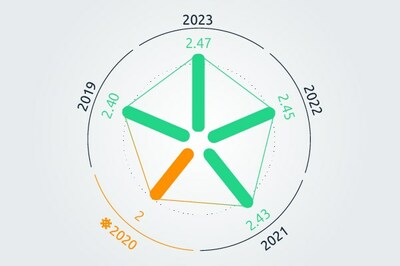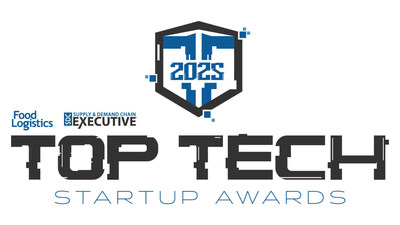Global Field Programmable Gate Array Market: Analysis By Configuration, By Technology, By Application, By Region Size and Trends with Impact of COVID-19 and Forecast up to 2028
Press Releases
Mar 09, 2023
NEW YORK, March 9, 2023 /PRNewswire/ — The global field programmable gate array (FPGA) market was valued at US$7.87 billion in 2022 and is expected to be worth US$14.16 billion in 2028. FPGAs are solid-state devices made up of a collection of programmable logic blocks (CLBs) connected by programmable connections. A field-programmable gate array (FPGA) is an integrated circuit that can be programmed after it has been manufactured. The most significant advantage of this chip is that it can be upgraded and reprogrammed as needed. This means that users can tailor tours to their specific needs. The demand of FPGA is projected to be driven by the rising demand for these devices in numerous applications, including infotainment systems, speech recognition, and machine vision systems.
Read the full report: https://www.reportlinker.com/p06428155/?utm_source=PRN
The increasing demand for high-performance computing and data processing is one of the key drivers of the FPGA market. FPGAs are ideal for use in data centers where high-speed processing is required because they can be programmed to perform specific tasks or algorithms. FPGAs can also be used in artificial intelligence (AI) and machine learning (ML) applications, which are growing rapidly. The market is expected to grow at a CAGR of 10.28% over the projected period of 2023-2028.
By Configuration: The report identifies three segments on the basis of configuration: High-range FPGA, Mid-range FPGA and Low-range FPGA. High range FGPA segment dominated the market in 2022. High-range FPGAs are the largest and most powerful FPGAs available, with the ability to contain hundreds of thousands to millions of logic elements. They are capable of handling the most complex designs and can be used for applications such as data center acceleration, high-performance computing, and aerospace and defense systems. The increasing demand for high-performance computing, artificial intelligence (AI), and machine learning (ML) applications, the growing need for data processing and analytics in industries such as finance, healthcare, and retail and the increasing adoption of 5G technology and the need for high-speed networking infrastructure are expected to drive the segment’s growth in coming years.
By Technology: The report identifies four segments on the basis of technology: SRAM-based Field Programmable Gate Array (FPGA), Flash-based Field Programmable Gate Array (FPGA), Anti-fuse Based Field Programmable Gate Array (FPGA) and Other FPGA technologies. The Static Random-Access Memory (SRAM) segment held the highest revenue share in 2022, owing to the superior flexibility, re-programmability, high integration, and high performance for a variety of applications. The widespread use of SRAM-based field programmable gate arrays in military and aerospace, telecommunications and wireless communication systems, and consumer goods is boosting segment’s growth.
By Application: The report identifies seven segments on the basis of end user: Telecom, Automotive, Industrial, Consumer Electronics, Military & Aerospace, Data Processing and Others. The telecom sector had the highest revenue share in 2022 and is expected to maintain the dominance over the forecast period. The widespread use of field programmable gate arrays (FPGAs) in wireless communication and telecommunication sectors for a variety of applications such as data packet switching, packet processing, and optical transport networks is propelling the FPGA market forward. Furthermore, they provide bandwidth to telecom service providers in order for them to create compatible networks ranging from 3G to LTE and beyond. The introduction of 5G networks is expected to propel FPGA growth even further from 2023 to 2028, as they provide configurability, flexible hardware accelerators, high-speed switching, and low-latency operation at low cost.
By Region: In the report, the global field programmable gate array (FPGA) market is divided into five regions: Asia Pacific, North America, Europe, Middle East & Africa and Latin America. The Asia Pacific region had the highest revenue share of the field programmable gate arrays market during the year 2022 and is expected to maintain its dominance throughout the forecasted period. China accounted for the largest revenue share in the region as a result of the government’s ongoing investments and initiatives to boost industry growth. For example, China established US$28.9 billion government-backed semiconductor fund to support the domestic chip industry. This initiative focuses on creating new market opportunities by developing FPGAs, core processing units, and memory chips.
North America held a significant share in the field programmable gate array (FPGA) market in 2022. The FPGA market in North America is a growing and dynamic industry, driven by technological advancements and increasing demand for high-performance computing. The demand for FPGAs in North America is driven by several factors. First, the region has a strong industrial base, with many companies in sectors such as aerospace, defense, and automotive using FPGAs for applications such as image processing, radar, and driver assistance systems. The North American FPGA market is gaining traction due to the region’s increasing adoption of smart factories and industrial automation. For instance, Schneider Electric opened its first smart factory in the US. It featured a range of products including an FPGA-based Human-Machine Interface (HMI), industrial control systems, industrial robots, and industrial communication devices.
Growth Drivers: One of the key drivers of the market’s expansion is the growth in increasing adoption of ADAS and in vehicle infotainment. ADAS and IVI systems rely heavily on high-performance processors that can handle complex algorithms and real-time data processing. FPGAs offer a flexible and high-performance solution for these requirements, making them an ideal choice for use in these applications. In ADAS, FPGAs are used to accelerate the processing of image and sensor data from cameras and radar systems. These systems use computer vision algorithms to analyze the data and detect objects on the road, such as other vehicles, pedestrians, and obstacles. FPGAs can perform these computations in real-time, making them an essential component of ADAS systems. In IVI systems, FPGAs can be used for various functions such as processing high-definition video streams, controlling the infotainment system, and managing communication between different devices in the car. FPGAs also offer significant advantages over traditional processors, such as low latency and power consumption. Therefore, the increasing adoption of ADAS and IVI systems are driving the growth of the FPGA market. Other significant growth factors of the market include growing demand for IoT, increasing penetration of 5G, increased use of FPGA in radio astronomy, rising adoption of FPGA in data centers, increasing demand for cyber security and growing finance, trading, and insurance sectors.
Challenges: However, some challenges are impeding the growth of the market such as high costs and hidden bugs in FPGAs. Field-programmable gate arrays (FPGAs) are integrated circuits that can be programmed to perform specific functions, making them highly versatile in a variety of industries, including telecommunications, automotive, aerospace, and consumer electronics. However, the high development costs associated with designing and programming FPGAs have been identified as a factor hampering the growth of the FPGA market. The development of FPGA involves a complex design process that requires a high level of expertise in digital circuit design and computer engineering. The initial design and programming of FPGA can be time-consuming and expensive, as it requires the use of specialized hardware and software tools. Additionally, FPGAs often require customization for specific applications, which can add to the development costs. Moreover, the costs associated with producing FPGA-based systems can also be high due to the need for additional components and infrastructure to support the FPGA.
Trends: The market is projected to grow at a fast pace during the forecast period, due to increasing proliferation of artificial intelligence (AI), integration of FPGA in cloud computing and Infrastructure-as-a-Service (IaaS), rising demand for FPGAs in high bandwidth devices, integration of FPGA in robotics and advancements in FPGA based embedded system technology. The proliferation of Artificial Intelligence (AI) is driving the growth of the Field-Programmable Gate Array (FPGA) market due to its ability to provide high-performance hardware acceleration for AI applications. As AI algorithms become more complex, traditional processors struggle to keep up with the computational demands, leading to the need for specialized hardware that can handle the massive amounts of data that need to be processed. FPGAs are a type of programmable logic device that can be reconfigured to perform specific tasks, making them ideal for implementing custom logic designs for AI applications. FPGAs are also highly parallel, allowing for the execution of multiple tasks simultaneously, which is critical for AI workloads that require massive parallelism. As the demand for AI applications grows, the FPGA market is expected to continue to expand, driven by the need for specialized hardware that can deliver high performance and low latency for these applications.
The outbreak of the COVID-19 pandemic resulted in a global economic slowdown, which impacted the demand for electronic components, including FPGAs. Many companies reduced their capital expenditure, including investment in new hardware, which led to a decline in demand for FPGAs. Moreover, the pandemic has caused significant disruption to the supply chain, leading to shortages in raw materials and components needed for manufacturing. This has caused delays in production, and as a result, the availability of FPGAs has been significantly affected. In addition, the pandemic has also led to restrictions in international trade, making it harder to import and export products. This has made it difficult for manufacturers to procure the necessary components for FPGAs, leading to delays and increased costs.
The post-COVID environment also appears to be fortunate for the market. The pandemic accelerated the adoption of digital technologies, such as e-commerce, cloud computing, and the Internet of Things (IoT). These technologies rely heavily on FPGAs for their functionality and performance, leading to an increase in demand for FPGAs used in these applications. As a result, the FPGA market is expected to grow significantly in the coming years. The pandemic has highlighted the importance of digital infrastructure and the need for resilient and secure communication networks. This has led to increased investment in research and development for new FPGA technologies, such as advanced encryption and security features. As businesses and industries become more reliant on digital technologies, the demand for more advanced and secure FPGA products is expected to grow.
Competitive Landscape:
Global field programmable gate array (FPGA) market is highly consolidated in nature. Companies are focusing on R&D to develop technologically advanced products in order to gain competitive advantage, and they are also engaging in partnerships, mergers, and acquisitions in order to strengthen their product portfolio, manufacturing capacities, and provide competitive differentiation. For example, in April 2019, Intel Corporation acquired Omnitek, a provider of vision field programmable gate array IP solutions based in England.
The key players in the global field programmable gate array (FPGA) market are:
Intel Corporation
Lattice Semiconductor Corporation
QuickLogic Corporation
AMD (Xilinx, Inc.)
Microchip Technology Inc.
Achronix Semiconductor Corporation
Menta SAS
S2C
Gowin Semiconductor
Efinix, Inc.
Flex Logix Technologies, Inc.
Shanghai Anlogic Technology Co., Ltd.
NanoXplore SAS
Suppliers are adopting the fabless strategy, which allows them to gain access to fabrication facilities without incurring significant capital investment. Fabless firms can outsource FPGA production and devote their time, resources, and efforts to developing new ideas, conducting research, and improving their marketing tactics in order to increase their sales.
Read the full report: https://www.reportlinker.com/p06428155/?utm_source=PRN
ReportLinker is an award-winning market research solution. Reportlinker finds and organizes the latest industry data so you get all the market research you need – instantly, in one place.
Contact Clare: [email protected]
US: (339)-368-6001
Intl: +1 339-368-6001
![]() View original content to download multimedia:https://www.prnewswire.com/news-releases/global-field-programmable-gate-array-market-analysis-by-configuration-by-technology-by-application-by-region-size-and-trends-with-impact-of-covid-19-and-forecast-up-to-2028-301767891.html
View original content to download multimedia:https://www.prnewswire.com/news-releases/global-field-programmable-gate-array-market-analysis-by-configuration-by-technology-by-application-by-region-size-and-trends-with-impact-of-covid-19-and-forecast-up-to-2028-301767891.html
SOURCE Reportlinker




